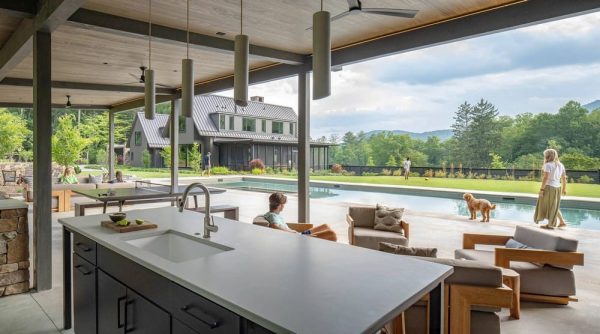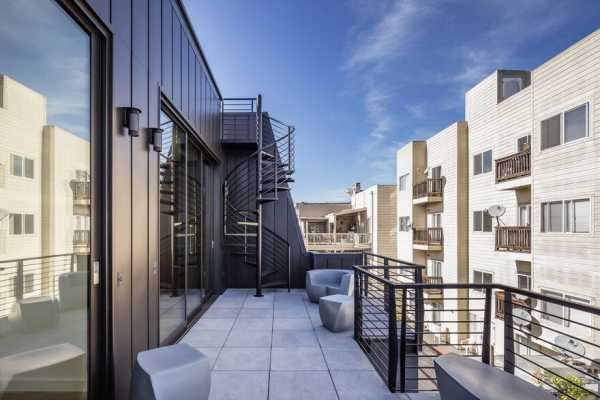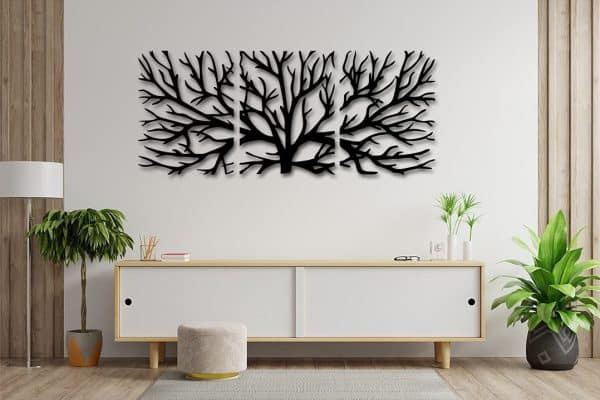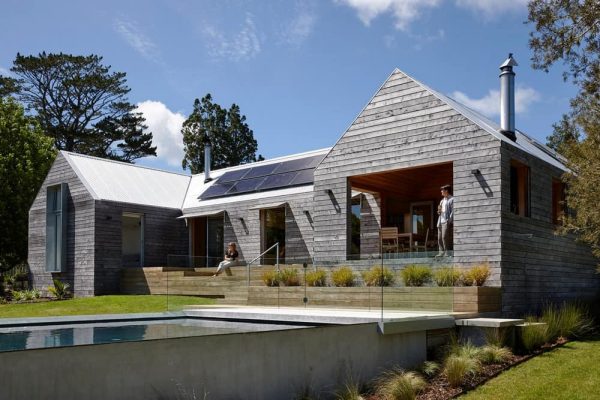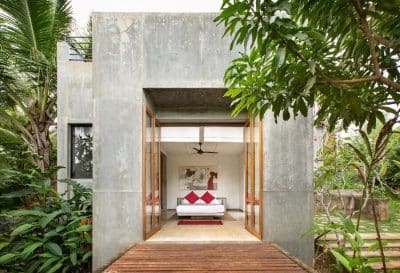
Sedum is a succulent plant highly suitable for a green roof. There are numerous types of these sedum green roofing, each serving its purpose. If you are a climate enthusiast and want to renovate your roof naturally, a sedum roof is a way to go. Start by incorporating sedum species to enhance biodiversity and make an aesthetically pleasing look at your green roof. So, hire a professional to install a green roof to ensure proper construction.
Green Roof With Sedum
The green roof with sedum usually comprises numerous layers. Here, the base layer is waterproof, which prevents water leakage. Above this layer is a layer of roots, mainly a barrier preventing plant roots from entering the waterproof layer. Then, a drainage layer is there, which helps allow the excess water to flow outside and, as a result, prevents water logging.
Above this layer is a filter fabric, which prevents soil from clogging. So sedum is an excellent succulent and drought-resistant and is best for green roofs. This is because it requires meager maintenance costs and procedures. It also consists of shallow roots, which reduce the risk of damaging the roof’s structure. Moreover, sedum plants also provide insulation benefits by regulating the temperature.
Hence, the green roof with sedum contributes to a sustainable environment and supports air quality. They can also be designed for numerous purposes, including appealing looks, enhancements, and environmental conservation.
Types of Green Roofs
Several green roofs exist, but the three are common in different areas. All these types serve different purposes and accommodate different plant species. The following are the three common types of green roofs.
Extensive Green Roof
The extensive Green Roof comprises a waterproof membrane that helps prevent water leakage into the building. It also has a drainage layer that allows the water to flow through. A root barrier also prevents roots’ penetration into the waterproof layer. A filter fabric is also there, which helps in preventing soil from clogging. A growing medium is also used in the extensive green roof of lightweight soil. This medium helps in supporting the growth of plants.
Benefits:
The following are some benefits of extensive green roofs:
- Insulation: The extensive Green Roof provides a thermal insulation property. This is done by reducing the energy consumption for both the cooling and heating effects.
- Improvement of Air Quality: These succulent plants also help filter different types of air pollutants, which, as a result, improves the quality of air.
- Energy Efficient: The extensive green roofs also help regulate the indoor environment’s temperature. This is done by reducing the cooling and heating effect, consequently enhancing energy efficiency.
- Low Maintenance: The extensive green roofs are also very beneficial because they require minimal maintenance. There is no big maintenance cost required to update these roofs. This is all because of the hardy nature of the plants, which reduces the overall cost.
Intensive Green Roof
The intensive green roof helps prevent water penetration in the building structure. It consists of a root barrier that helps restrict the plant roots from getting into the waterproof layer. These intensive green roofs also help support a variety of plants, including perennials, shrubs, and other small trees. A growing medium, a deeper soil layer than the extensive green roof, is also present in this green roof type. This helps allow the different plants to carry this type of green roof.
Benefits:
- Aesthetic Value: The intensive green roof also increases the aesthetic appeal of a building. It also increases the visual appeal of the surrounding area with diverse plant colours, structures, and types.
- Urban Agriculture: The intensive green roofs are very helpful for cultivating edible plants, vegetables, etc. This helps in promoting food production in the local areas.
- Biodiversity Conservation: This intensive Green Roof helps increase biodiversity by supporting many plants and animals. This contributes to long-term biodiversity conservation.
- Community Engagement: The intensive Green Roof also helps increase social interaction and community engagement by creating communal spaces.
Intensive green roofs have a higher initial cost than extensive roofs and require more maintenance. So they offer a range of benefits. Because of this reason, they can serve multiple functions.
Semi-intensive Green Roof
Semi-intensive green roofs are essential for preventing water from entering the main structure of the building. A filter fabric is present in the semi-intensive green roof, which helps in preventing soil clogging. A growing medium, a soil layer of medium depth, is also present in this structure. It helps in providing accessibility and strength to different types of plants. This type of green roof also comprises a root barrier and a drainage layer. They help in restricting root growth and facilitating water drainage.
Benefits:
- Biodiversity: The semi-intensive green roofs balance the intensive and extensive green roofs. This helps in providing a living habitat for different birds and insects. As a result, it helps in biodiversity conservation.
- Stormwater Management: The semi-intensive Green Roof helps in stormwater storage. As a result, it reduces the risk of flooding. This also helps increase the sustainability of urban drainage.
- Roof Protection: The semi-intensive green roof is a protective layer for the waterproofing membrane. The protection is done from extreme weather conditions and UV exposure, enhancing its life span.
- Air Quality Improvement: The semi-intensive green roofs also increase the overall quality of air and contribute to air purification in the surrounding areas.
- Plant Diversity: The semi-intensive green roofs also support many plant species. These species include a mixture of complex vegetation and hardy plants.
Hence, the semi-intensive green roof balances the benefits of extensive and intensive roofs’ functionality. These roofs are best suited for middle-ground projects that provide both ecological contributions and aesthetic appeal.

Advantages and Disadvantages of Sedum Roofs
The Benefits of Sedum Roofs
The following are the advantages associated with using green roofs with sedum:
Drought Tolerance:
Sedum plants are best known for their drought-tolerance properties. This is because they can easily survive in very little water. This ability of sedum plants makes them the best choice for green roofs. Through this, they can quickly help conserve water and make a sustainable urban life.
Aesthetics:
The green roofs are very helpful in changing the entire building’s appearance. They look more aesthetic when sedum plants are used because they provide aesthetics and practicality. It helps increase the greenery and enhance the aesthetic appeal of any space. They also increase biodiversity by providing a space to live for numerous birds, insects, and living species.
Adaptability:
The sedum succulent plants are adaptable to numerous climates, including extremely hot to icy weather conditions. This property of sedum plants helps them to be chosen for multiple roof types. As a result, they can be used for commercial and domestic roofs. They are highly adaptable to extreme weather conditions as well.
Insulation:
The sedum roof provides an excellent insulation property. This insulation leads to a reduction in the heat and cooling comfort of a building. This is because they powerfully resist any extreme weather inside the building. As a result, this enhanced insulation property of sedum plants can lead to energy-efficient systems inside the building.
Noise Reduction:
The sedum green roofs are beneficial in reducing the noise inside the building. This is because they add an extra layer of vegetation, which helps reduce the entrance of surrounding noise inside the building. It is also beneficial for people with small families and children. So it makes a very calm and soothing environment inside the building.
Air Quality Improvement:
Sedum plants are beneficial in inhaling carbon dioxide and releasing oxygen into the atmosphere. They are also accommodating in filtering the different types of air pollutants. As a result, they increase the air quality in the atmosphere reaching the building. So, a very healthy urban environment is created with the help of a green roof with sedum.
Disadvantages of Sedum Roofs:
Some disadvantages are also associated with the benefits of Sedum green roofs. Following are the disadvantages to consider before installing sedum roofs.
- Costly: The initial installation of serum roofs can appear expensive compared to traditional roof settings.
- Structural Concerns: The added weight of the vegetation and green roof on the building can disturb the organizational structure of any building.
- Limited Plant Variety: The sedum plant species offer a small variety of plants.
- Leakage and Drainage Issues: Water leakage or drainage problems can occur if installed improperly.
- Aesthetics: Some individuals may find them less appealing as they are not very colorful.
- Installation Expertise: A complete installation expert must ensure this green roof’s long-term use and effectiveness.
Which Sedum Species Should I Plant On My Green Roof?
Choosing the suitable sedum species for your green roofs is a crucial step. It depends on numerous factors, including climate, roof structure, and personal choice. Following are the sedum species that you should opt for for your green roof.
- Sedum Acre is a hardy plant with drought tolerance abilities. It is mainly found in Europe but its use in green roofs has spread to North America, Asia, Japan, and the USA.
- Sedum Album is a cold, hardy plant with drought-resistant properties. It mostly grows in northern temperate regions while flowering in summer. This evergreen plant requires less watering and can be sustained in challenging conditions.
- Sedum Ternatum is a plant also known as woodland stonecrop, which is preferable for shaded areas and is native to North America. Its succulent blue-green leaves remain evergreen, with flowers emerging from April to May.
- Sedum Cauticola, or clif stonecrop, is a colorful and compact plant suitable for small spaces. Its pink-tinged-green leaves and flowers are excellent for forming a carpet to cover roofs and small patches. The plant is mainly found in Japan, but it has made a significant market in the US.
Factors To Consider When Choosing A Sedum Roof
The following are some factors that should be considered when selecting a sedum for a green roof:
Climate: Always choose sedum species suited to your area’s climate. You should consider temperature, conditions, sunlight exposure, and precipitation levels.
Green Roof Type: You must know the type of green roof, whether you use an extensive or intensive green roof. Extensive green roofs are preferable because of their low maintenance and drought-tolerant ability.
Roof Structure: Always check the load-bearing ability of your green roof. This helps to ensure how much weight can be borne by the roof.
Maintenance Requirements: Always assess the maintenance level because different species of sedum plants have different maintenance requirements. Also, low maintenance needs by sedum plant species are preferable.
Local Regulation and Planning Guidelines: You must know the regulations and guidelines of your locality regarding green roof installations. This is because different areas have different laws regarding varying plant species.
Conclusion
Sedum plant species are well suited for different climates. They possess both pros and cons. Sedum plants have drought-tolerance properties with water absorbance characteristics. It is well suited for different types of roof structures and different weather conditions. So, implementing a green roof with sedum can provide environmental benefits and an appealing look. Hence, by careful planning and execution, you can get a sustainable and successful green roof project.


